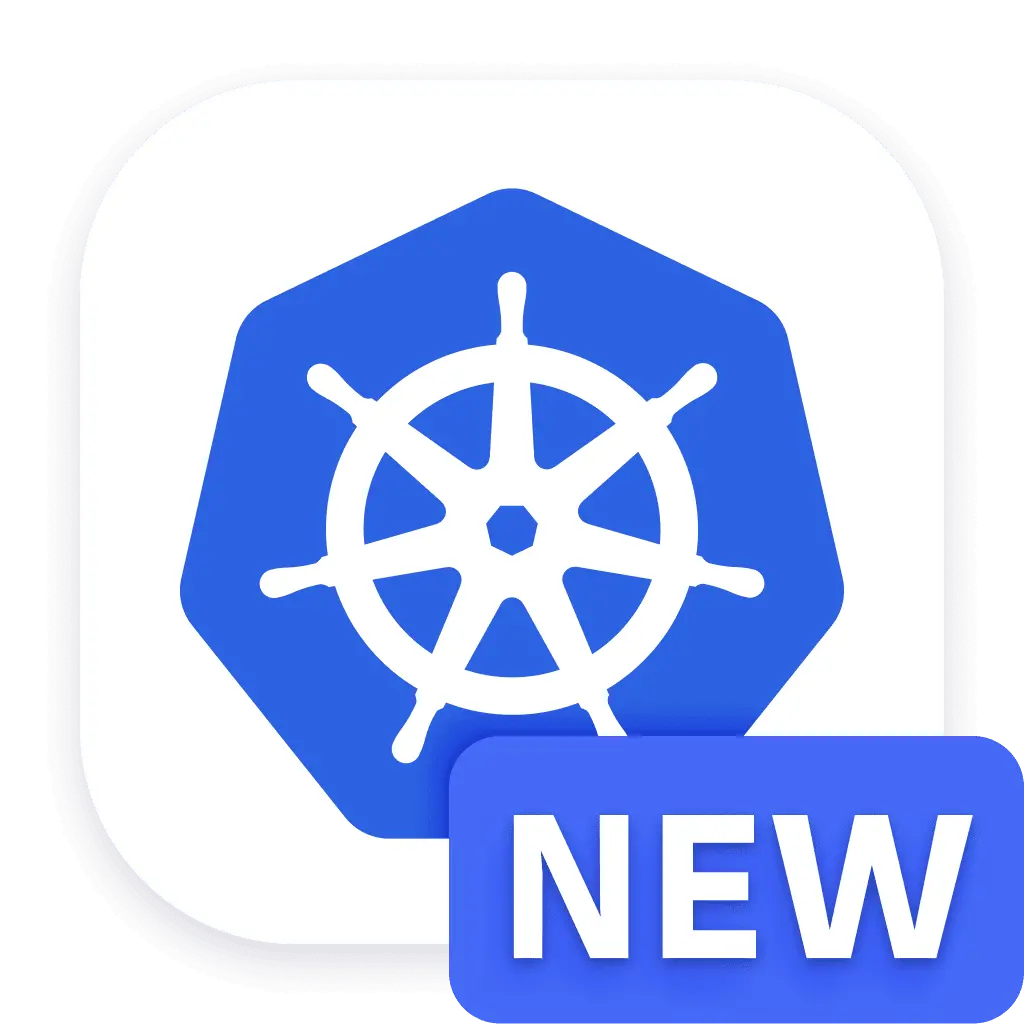Kubernetes Security Posture Management
- Latest Dynatrace
- How-to guide
- 5-min read
Dynatrace Kubernetes Security Posture Management enables you to detect, analyze, and monitor misconfigurations, security hardening guidelines, and potential compliance violations across your Kubernetes deployment.
How it works
Dynatrace ingests configuration data from your clusters and workloads into Grail, where it's formatted into compliance events according to the Semantic Dictionary conventions.
The mechanism is described below.

1. KSPM is configured by Dynatrace Operator to collect data
Once you enable Dynatrace Kubernetes Node Configuration Collector in Dynatrace Operator, it's deployed as a DaemonSet on your monitored cluster's nodes to collect cluster and workload configuration data.
2. Data is collected
- Node Configuration Collector collects data from the cluster nodes.
- Frequency: every minute
- ActiveGate collects data from the Kubernetes API.
- Frequency: every hour
3. Data is sent to the Dynatrace Cluster
ActiveGate processes all data received from the nodes and Kubernetes API and sends it to the Dynatrace Cluster.
4. Data is mapped
This section has been updated to align with the new Grail security events table. For the complete list of updates and actions needed to accomplish the migration, follow the steps in the Grail security table migration guide.
The cluster and workload configuration data is mapped as compliance events according to the Semantic Dictionary and stored in the default_securityevents_builtin bucket (for details, see Built-in Grail buckets).
5. Compliance results are ready to use
Once data is ingested into Grail, you can analyze your clusters' security posture and evaluate your compliance with industry standards. For details, see What's next.
Prerequisites
Dynatrace version 1.305+ Dynatrace Operator version 1.5.0+ ActiveGate version 1.321+
-
Security Posture Management is licensed based on the consumption of host-hours and requires the Dynatrace Platform Subscription (DPS) licensing model.
If you're using Dynatrace classic licensing, or if you're on DPS but don't see the SPM capability enabled in your DPS rate card, please contact a Dynatrace product expert via live chat.
-
Review the Supported compliance standards and technologies.
-
Support is limited to compatibility with upstream Kubernetes and available for x86-64 CPU architectures only.
-
Amount of replicas of ActiveGate Pods needs to be set to 1 (default).
-
If you're using a Dynatrace Operator version earlier than 1.4.0, you need to upgrade before you can continue.
Deploy
See below how to set up and enable Kubernetes Security Posture Management.
Set up Dynatrace Kubernetes Node Configuration Collector
1. Create secret
If you already created a secret with a token in a previous deployment of Dynatrace Operator, you can skip this step.
-
Create a Dynatrace Operator token.
For instructions, see Access tokens and permissions.
-
Create a secret to hold the access token that will be used by Dynatrace Operator to communicate with the Dynatrace environment.
kubectl -n dynatrace create secret generic dynakube --from-literal="apiToken=<OPERATOR_TOKEN>"
2. Configure DynaKube
-
Create your DynaKube custom resource (minimum
apiVersion: dynatrace.com/v1beta4is required), making sure to enable the following:-
Kubernetes Security Posture Management:
spec.kspm: {}: Enables the KSPM Node Configuration Collector DaemonSet (for details, see How it works)
KSPM mounts the hosts root filesystem by default. If you want to limit that to specific paths, you can use the field
spec.kspm.mappedHostPaths. Thespec.kspm.mappedHostPathsfield defines the host paths that are mounted to the container. For a list of suggested paths, see the Dynatrace Operator repository sample. -
ActiveGate with Kubernetes monitoring and additional configuration:
-
spec.activeGate.capabilites: Must containkubernetes-monitoring1. Configuration for ActiveGate versions earlier than 1.311
For ActiveGate versions earlier than 1.311, make sure to enable the following:
-
spec.activeGate.capabilites: Must containkubernetes-monitoring -
spec.activeGate.customProperties: Must contain the following:[kubernetes_monitoring]kubernetes_configuration_dataset_pipeline_enabled = truekubernetes_configuration_dataset_pipeline_include_node_config = true
-
-
-
Templates with Kubernetes Security Posture Management image:
spec:...templates:kspmNodeConfigurationCollector:imageRef:repository: public.ecr.aws/dynatrace/dynatrace-k8s-node-config-collectortag: <tag>For more information on tags, visit the public registry repository.
-
Tolerations to deploy Node Configuration Collector to the control plane and master nodes
.spec.templates.kspmNodeConfigurationCollector.tolerations
For guidelines on how to set properties, see Add a custom properties file.
For a list of all available parameters, see DynaKube parameters for Dynatrace Operator.
Example DynaKube:
apiVersion: dynatrace.com/v1beta5kind: DynaKubemetadata:name: dynakubenamespace: dynatracespec:apiUrl: https://ENVIRONMENTID.live.dynatrace.com/apitokens: <secret-token>kspm:mappedHostPaths:- /boot- /etc- /proc/sys/kernel- /sys/fs- /sys/kernel/security/apparmor- /usr/lib/systemd/system- /var/libactiveGate:capabilities:- kubernetes-monitoringtemplates:kspmNodeConfigurationCollector:imageRef:repository: public.ecr.aws/dynatrace/dynatrace-k8s-node-config-collectortag: <tag>tolerations:- effect: NoSchedulekey: node-role.kubernetes.io/masteroperator: Exists- effect: NoSchedulekey: node-role.kubernetes.io/control-planeoperator: Exists1. Example DynaKube for ActiveGate versions earlier than 1.311
apiVersion: dynatrace.com/v1beta5kind: DynaKubemetadata:name: dynakubenamespace: dynatracespec:apiUrl: https://ENVIRONMENTID.live.dynatrace.com/apikspm:mappedHostPaths:- /boot- /etc- /proc/sys/kernel- /sys/fs- /sys/kernel/security/apparmor- /usr/lib/systemd/system- /var/libactiveGate:capabilities:- kubernetes-monitoringcustomProperties:value: |[kubernetes_monitoring]kubernetes_configuration_dataset_pipeline_enabled = truekubernetes_configuration_dataset_pipeline_include_node_config = truetemplates:kspmNodeConfigurationCollector:imageRef:repository: public.ecr.aws/dynatrace/dynatrace-k8s-node-config-collectortag: <tag> -
-
Apply the DynaKube custom resource.
kubectl apply -f dynakube.yaml
3. Verify configuration
-
Check the status of your DynaKube custom resource.
kubectl get dks -n dynatrace1. Expected result
DynaKube status is
Running.NAME APIURL STATUS AGEdynakube <environment-api-url> Running 3m48s -
Check the deployment status of the Node Configuration Collector DaemonSet.
kubectl get daemonset -n dynatrace -l app.kubernetes.io/component=kspm1. Expected result
All Pods are in
READYmode.NAME DESIRED CURRENT READY UP-TO-DATE AVAILABLE NODE SELECTOR AGEdynakube-node-config-collector 3 3 3 3 3 <none> 11m -
Check the deployment status of the ActiveGate StatefulSet.
kubectl get statefulset -n dynatrace -l app.kubernetes.io/component=activegate1. Expected result
ActiveGate is in
READYmode.NAME READY AGEdynakube-activegate 1/1 14m
Enable Kubernetes Security Posture Management
You can enable Kubernetes Security Posture Management in Settings per environment or per cluster. See below for instructions.
To enable Kubernetes Security Posture Management for all your monitored clusters
- Go to Settings Classic and select Application Security > Security Posture Management.
- Under Kubernetes, select Enable Security Posture Management.
What's next
Once you set up Kubernetes Security Posture Management, you can use
 Security Posture Management to analyze your clusters' security posture and evaluate your compliance with industry standards
Security Posture Management to analyze your clusters' security posture and evaluate your compliance with industry standards- Security Investigator
 to query compliance events for further insights
to query compliance events for further insights - Notebooks
 to share finding reports with stakeholders
to share finding reports with stakeholders
Limitations
Up to 100 nodes and 3,000 pods per Kubernetes cluster can be covered by Kubernetes Security Posture Management.
Further resources
- For a use case scenario, see Stay compliant with Security Posture Management.
- For a list of frequently asked questions on Kubernetes Security Posture Management, see FAQ.
- For a list of DQL examples based on compliance events that you can use for further investigation or reporting, see Query compliance events.
- For an overview of security data usage, see Security data on Grail.
